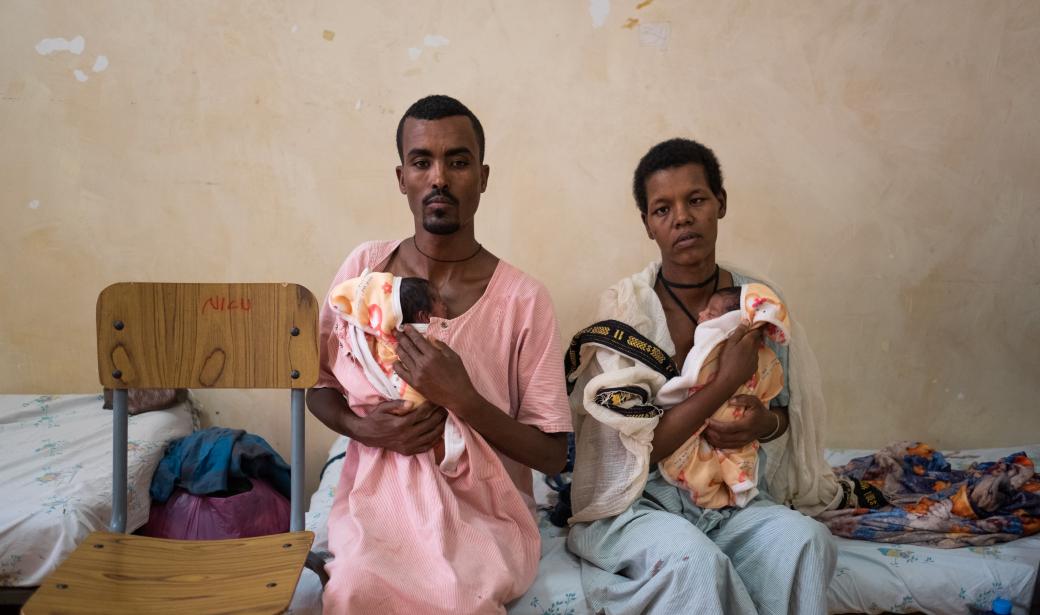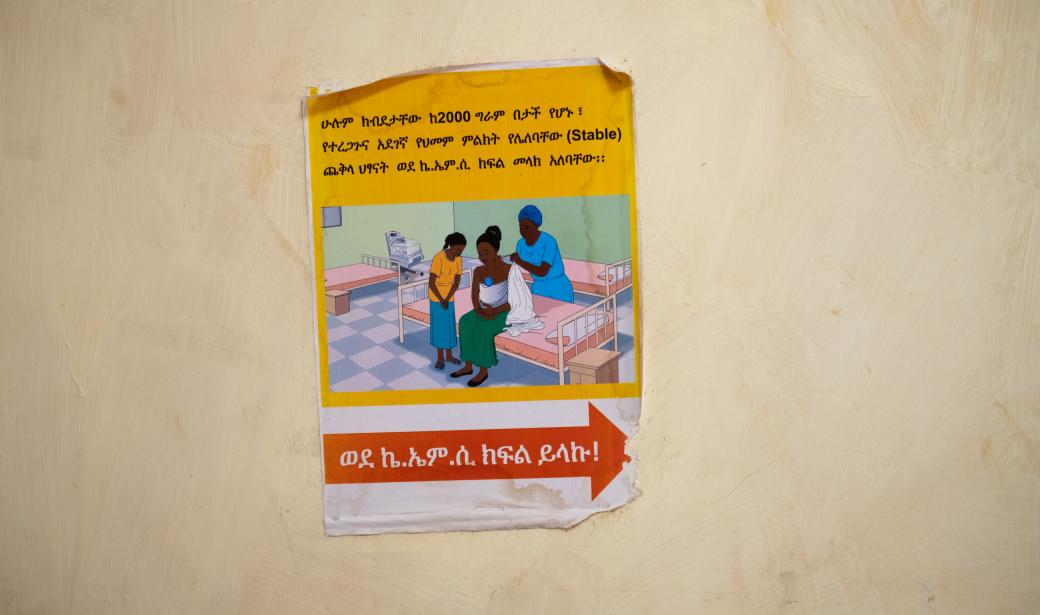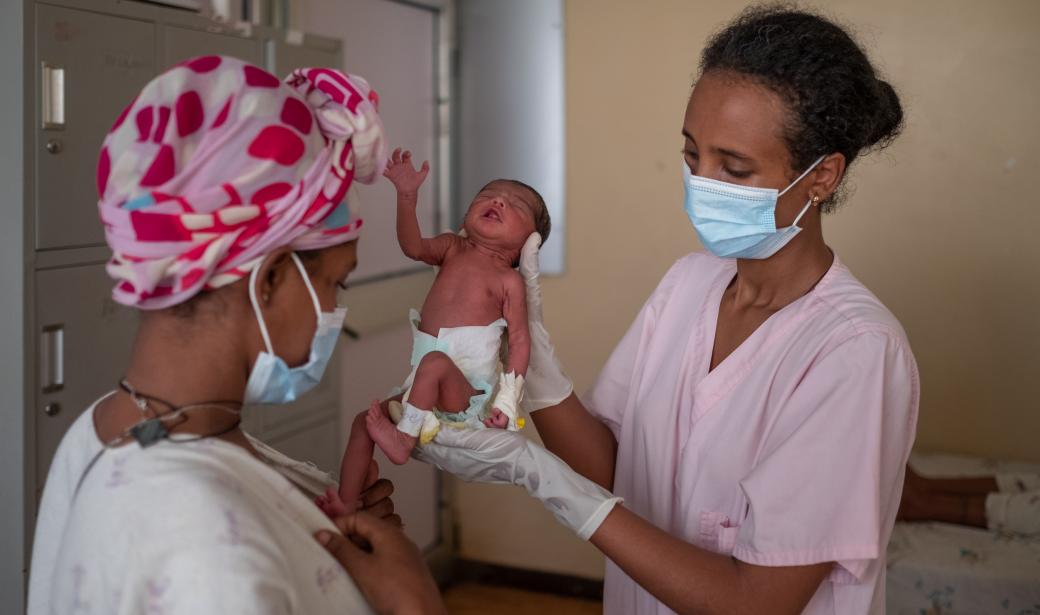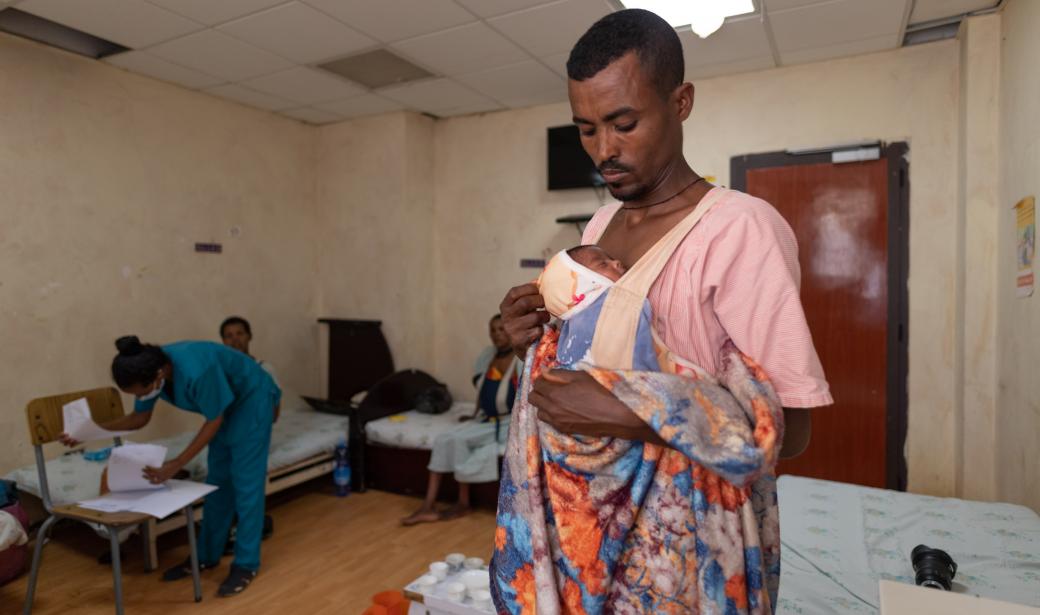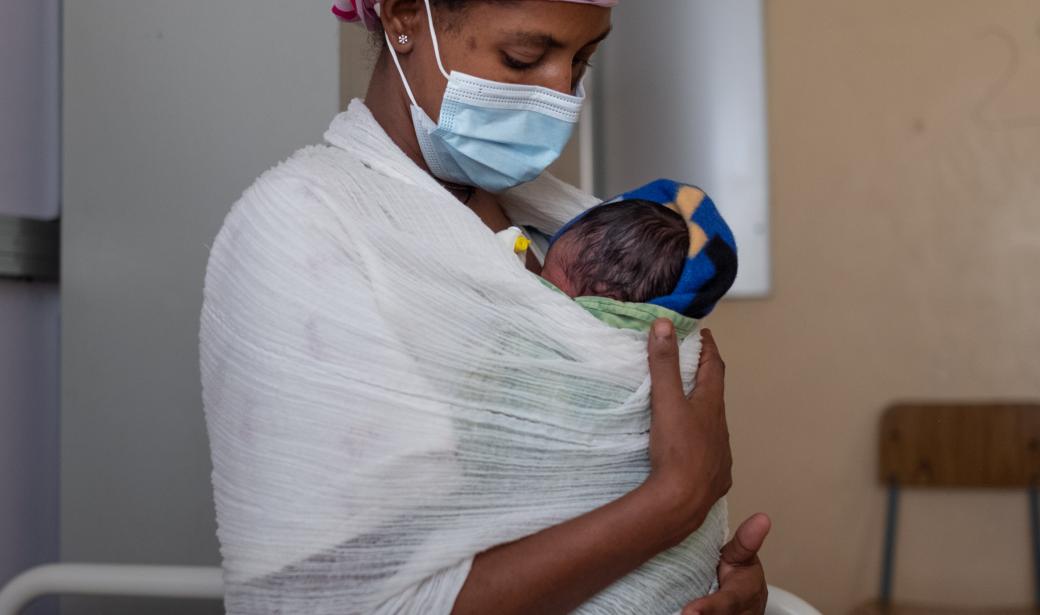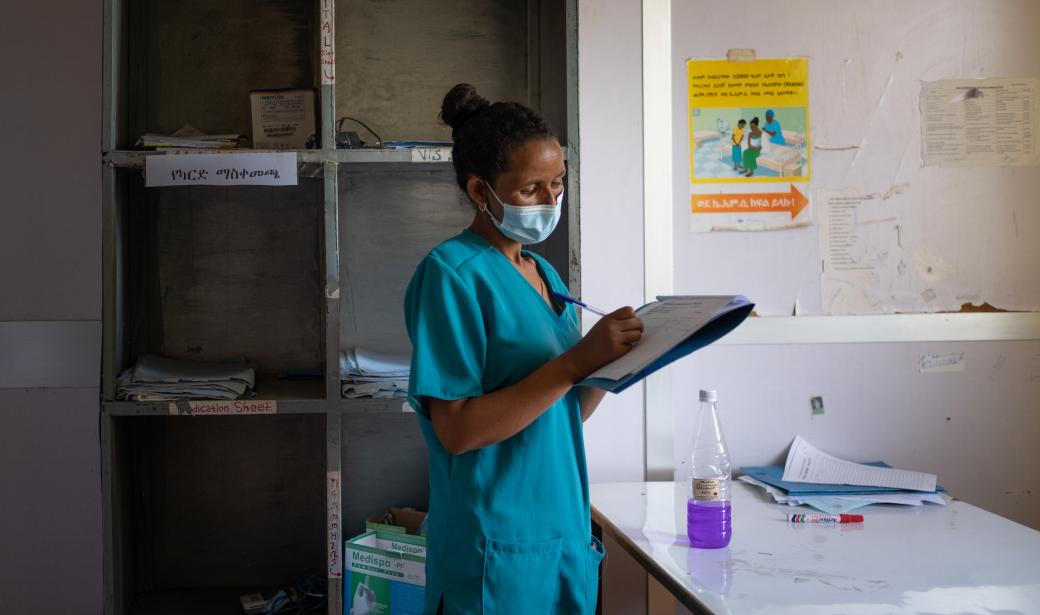Keeping mothers and babies together after birth improves survival rates for babies born early or small
WHO / Blink Media / Hilina Abebe
Around the world, 15 million babies are born preterm (before 37 weeks) and 21 million are born low birth weight (under 2.5kg) each year. These infants face significant health risks. Prematurity-related complications are the leading causes of death of newborns and children under 5.
WHO / Blink Media / Hilina Abebe
Kangaroo mother care is the practice of providing continuous, skin-to-skin contact for the baby for as long as possible during day and night, usually with the mother, as well as exclusive breastfeeding. Fathers and other caregivers can also provide skin-to-skin care.
It is the recommended, effective method of care for low birth weight babies, and is better than keeping a baby in an incubator, where they are separated from their parents or caregivers and lack precious close contact and bonding time.
It is the recommended, effective method of care for low birth weight babies, and is better than keeping a baby in an incubator, where they are separated from their parents or caregivers and lack precious close contact and bonding time.
WHO / Blink Media / Hilina Abebe
Kangaroo mother care is one of the most cost-effective ways to increase premature or low birthweight babies’ chances of survival, especially in low-income countries.
Among infants born preterm or low birth weight, kangaroo mother care has been shown to reduce infant deaths by as much as 40%, hypothermia by more than 70%, and severe infections by 65%, and provides more opportunities to breastfeed.
Among infants born preterm or low birth weight, kangaroo mother care has been shown to reduce infant deaths by as much as 40%, hypothermia by more than 70%, and severe infections by 65%, and provides more opportunities to breastfeed.
WHO / Blink Media / Hilina Abebe
Kangaroo mother care was introduced in Ethiopia in 1996 at the Black Lion Hospital in Addis Ababa. Since then, with assistance from the World Health Organization (WHO) and other partners, support for the practice has been expanded to other health facilities, including Felege Hiwot Hospital in Bahir Dar.
WHO / Blink Media / Hilina Abebe
Work continues to overcome barriers to the acceptance of kangaroo mother care in Ethiopia. WHO recently led a multi-country kangaroo mother care implementation research study to determine effective models of delivery. In Ethiopia, in the four regions where the study was conducted the use of kangaroo mother care increased from less than 5% to more than 60%. The study concluded that there are a number of factors that help inform national efforts to improve the implementation of kangaroo mother care. These include government leadership, an understanding by health workers that kangaroo mother care is the standard of care, and acceptance of the practice from women and families. Changes in infrastructure, policy, and health worker skills and practice are also key.
WHO / Blink Media / Hilina Abebe
However, COVID-19 threatens to derail recent progress. The COVID-19 pandemic is affecting the quality of care provided to babies in all regions of the world and threatening the implementation of life-saving interventions like breastfeeding and kangaroo mother care.
A new analysis showed that there is an increased risk of death among preterm or low birth weight babies if kangaroo mother care is not practiced, with this risk 65-fold higher than the risk of death due to COVID-19 infection.
WHO therefore advises that wherever possible, mothers and babies should not be separated during the pandemic, and that kangaroo mother care should continue to be supported for babies born early or small.
A new analysis showed that there is an increased risk of death among preterm or low birth weight babies if kangaroo mother care is not practiced, with this risk 65-fold higher than the risk of death due to COVID-19 infection.
WHO therefore advises that wherever possible, mothers and babies should not be separated during the pandemic, and that kangaroo mother care should continue to be supported for babies born early or small.
For Additional Information or to Request Interviews, Please contact:
Loza Mesfin Tesfaye
Senior Communications Officer
WHO Ethiopia
Email: tesfayel [at] who.int (tesfayel[at]who[dot]int)
Tel: +251 911 144 194 (Direct, Whatsapp)



